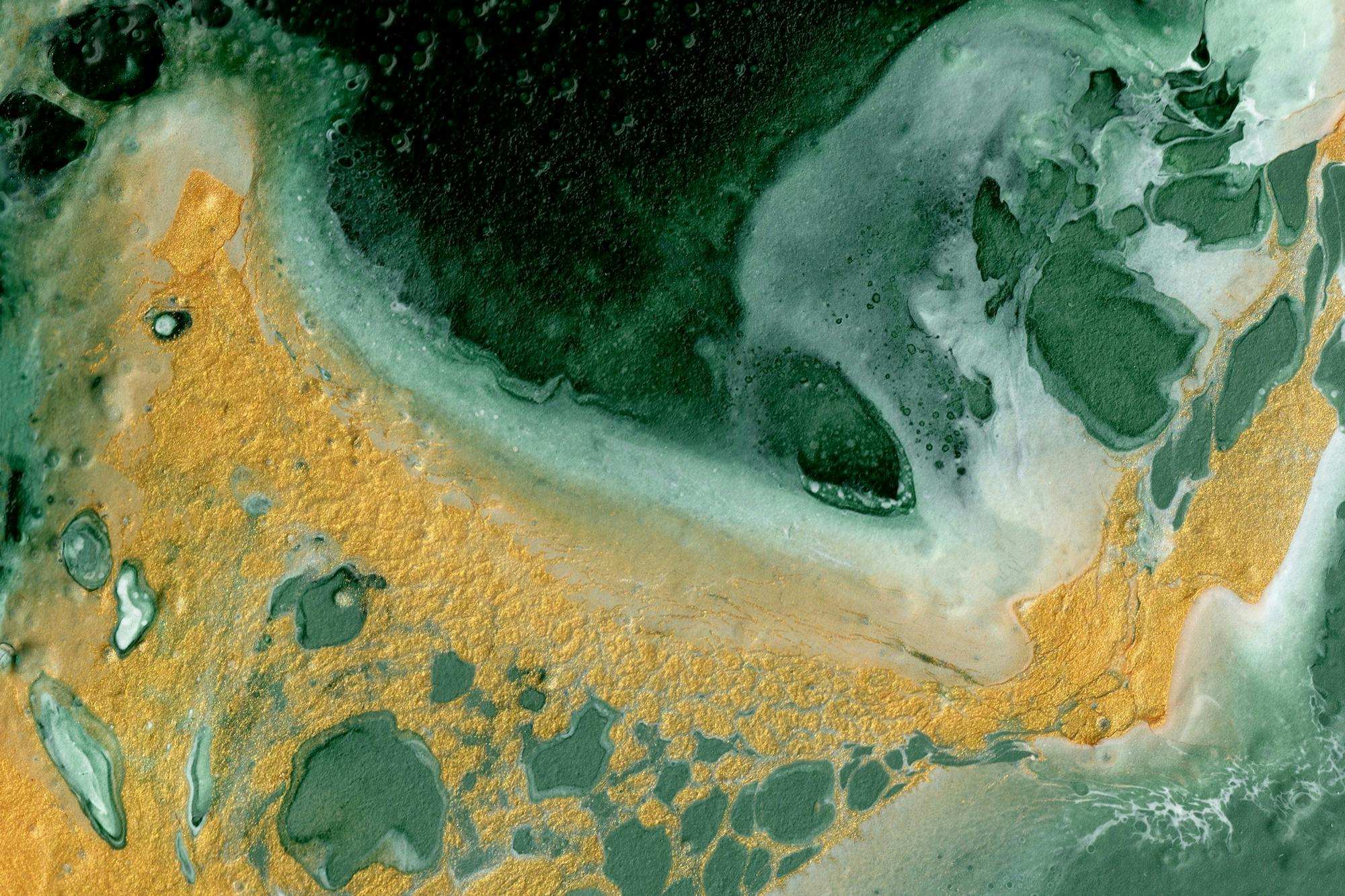
The Future of Ownership in the Age of AI: Rethinking Property Rights in a Generative World

As machines become creative partners, our centuries-old notions of intellectual property are being pushed to their breaking point. Here’s how we can adapt.
The art world was stunned in 2018 when an AI-generated portrait sold at Christie’s for $432,500. But that controversy may soon seem quaint as artificial intelligence reshapes creative production across every domain — from music to code to literature. We’re entering an era where the line between human and machine creativity is increasingly blurred, and our traditional frameworks for intellectual property rights are struggling to keep up.
Zoom image will be displayed
“Edmond de Belamy, from La Famille de Belamy,” by the French art collective Obvious.
Indeed, as artificial intelligence reshapes creative production, we face unprecedented questions about ownership, attribution, and copyright. Intellectual property law was built for human creators working on clearly delineated works. Today, it strains to accommodate AI-generated content that builds upon vast training datasets through complex statistical processes.
Consider a piece of art created by Midjourney, trained on millions of human artworks. Who owns the output? The AI’s creators? The artists whose work informed the model? The user who wrote the prompt? Or perhaps no one at all? Similar questions arise across domains — from AI-written code to generated music to synthetic voices.
For instance, if a developer uses an AI coding assistant trained on open-source repositories to build a commercial application that’s similar to — but not identical to — existing solutions. Who owns the intellectual property rights in the software? The developer who prompted the AI? The open-source developers whose work has been injected into the model? Or perhaps there is simply no copyright in the AI-generated code?
These aren’t just theoretical questions. As AI-generated content becomes ubiquitous, billions of dollars and the livelihoods of countless creators hang in the balance. Our current intellectual property system is ill-equipped to handle these challenges. We thus need a fundamental shift in how we think about ownership in the age of AI.
Rethinking Copyright: A New Framework for AI-Generated Content
The current IP system assumes clear authorship and originality — concepts that become murky when dealing with AI outputs that are inherently derivative. We need a new framework that acknowledges this fundamental shift in how creative content is generated, based on the following four key pillars:
1. Recognizing the derivative nature of AI outputs
Traditional IP law protects original works, but AI models inherently produce outputs based on what they’ve learned from prior works, making them fundamentally derivative. By viewing AI outputs as intrinsically transformative, we accept that no single author or creator can reasonably claim full ownership. Instead, these outputs should be understood as collective, embodying the ideas, patterns, and styles of countless artists, coders, and musicians whose works helped shape the model’s capabilities.
Hence, a rigid binary ownership model that assigns exclusive rights to one creator fundamentally fails to capture the complexity of AI-generated content. We need to recognize that AI-generated content is often a blend of multiple influences, layered and evolving in ways that challenge traditional concepts of authorship. New approaches to IP should accommodate partial or shared ownership based on contributions, allowing for tiered rights that recognize the layered nature of creative input. This system could empower multiple creators to be acknowledged and compensated according to their specific roles.
This approach would not only make our IP frameworks more adaptable to AI, but also ensure that the complex interdependence of human and machine creativity is honored. Such a framework could include fair-use provisions that recognize the AI’s dependence on prior works, along with adaptive licensing models that respect artists’ rights to their work without compromising AI’s utility as a transformative tool. By enabling AI to build responsibly upon previous contributions, we can maintain a creative ecosystem where both artists and machines can flourish, ensuring that innovation doesn’t come at the expense of original creators.
2. Commercial usage framework
Without clear guidelines, the commercial exploitation of AI-generated content leaves room for both overreach and misuse. With a structured framework for commercial use, we can establish more responsible practices for the use of AI-generated outputs, while protecting both the creators and the integrity of industries that depend on well-defined ownership.
As such, AI-generated content requires unique licensing structures that regulate its use across a range of applications, from private, non-commercial purposes to wide-scale commercial deployment. These licenses would ensure that creators — whether they’re individual artists or tech companies — have transparent options for how their outputs can be used, distributed, and monetized.
Such a framework should also delineate a clear distinction between personal and commercial use. For instance, while an individual might use an AI tool to experiment with design ideas privately, monetizing those outputs — whether through sale, publication, or distribution — should adhere to specific licensing terms to protect original creators and maintain industry standards.
Specific policies should also be defined for the use of AI-generated content in specific industries like music, publishing, and software, where traditional ownership structures may otherwise be upended. Policies tailored to these industries could guide the ethical use of AI-generated content, preventing its misuse in ways that would disrupt creative professions or unfairly displace human creators. Guidelines might include criteria for when AI-generated music or literature can be sold commercially, standards for attribution, and frameworks for royalties that recognize human input where applicable.
3. Creator protection mechanisms
As AI technology relies heavily on human-created data, it’s essential to protect the rights of these original creators. The training of AI models often draws from public, open-source, or other data without clear permission or recognition. Establishing protection mechanisms for creators is essential for maintaining their rights and incentivizing future contributions to the cultural landscape:
- Opt-out mechanisms: Just as individuals have the right to control their personal data, creators should have the ability to opt out of having their works used to train AI models. An opt-out mechanism would allow artists, writers, and other creators to easily control if and how their work becomes part of a dataset, respecting their choice and ownership over their creative output.
- Recognition and control for source contributors: AI training data often builds on existing works, but the contributions of human creators are seldom acknowledged. To prevent AI from diminishing the value of human work, protection mechanisms could offer recognition and even revenue-sharing for those whose work is instrumental in training AI models. By acknowledging their influence, AI developers could create systems that give creators more control over how their content is used.
- Fair use policies and safeguards: Current fair use policies need updating to address the unique demands of AI training. Protections should ensure that creators’ work isn’t unfairly absorbed and repurposed in ways that devalue their contributions. Mechanisms for transparency around what data is used, how it informs AI outputs, and protections to prevent oversaturation of specific creative styles or content can foster a balanced ecosystem.
4. Fair Compensation Systems
To incentivize a sustainable and fair ecosystem, contributors to AI’s foundational datasets must be compensated for their influence on AI-generated works. In other words, as the boundaries between human and machine creativity blur, we must implement structures that recognize and potentially reward the role that individual creators play in this new arena.
This requires, first and foremost, the elaboration of transparent attribution systems that would provide credit to original creators, ensuring their influence is acknowledged and valued. By fostering a culture of recognition, we not only honor the contributions of individual artists but also enhance the cultural richness of AI outputs, giving audiences deeper insights into the creative process behind the technology.
More radically, some suggestions have been made towards the development of revenue-sharing frameworks that allocate earnings fairly among data contributors. These models would ensure that artists, writers, musicians, and other creators benefit financially from the use of their works in training AI systems. By creating an incentive structure that acknowledges their contributions, we can cultivate a more inclusive ecosystem where creativity is rewarded, and all parties involved — developers, data providers, and users — share in the economic benefits generated by AI.
This type of compensation could be facilitated by automated royalty distribution channels, ensuring that both developers and content contributors receive their due earnings seamlessly. By leveraging blockchain technology or similar mechanisms, these channels can handle payments transparently and efficiently, reducing administrative burdens and ensuring timely compensation. This approach not only streamlines the financial aspects of AI content creation but also builds trust within the community by ensuring that everyone involved is recognized and rewarded for their contributions.
The future of digital rights depends on our ability to adapt and create systems that reflect the reality of AI-driven creation while protecting the interests of all stakeholders. We must move quickly but thoughtfully. We need a new framework that recognizes the inherently collaborative nature of AI creation, while ensuring human creators can thrive in this new landscape. The solutions won’t be simple, but they’re essential for the future of creative work. The decisions we make now about ownership in the age of AI will shape the creative economy for decades to come.



